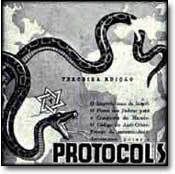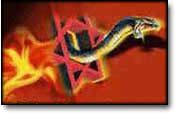.
THE ASSOCIATED PRESS
The three-foot-tall Gabriel Stone contains 87 lines of mysterious Hebrew text dating back as early as the first century BC. Scholars still debate the meaning of the writing on the tablet, but they agree the passage features the archangel Gabriel. An exhibit dedicated to the mysterious stone will open at the Israel Museum on Wednesday.
An ancient limestone tablet covered with a mysterious Hebrew text that features the archangel Gabriel is at the center of a new exhibit in Jerusalem, even as scholars continue to argue about what it means.
The so-called Gabriel Stone, a meter (three-foot)-tall tablet said to have been found 13 years ago on the banks of the Dead Sea, features 87 lines of an unknown prophetic text dated as early as the first century BC, at the time of the Second Jewish Temple.
Scholars see it as a portal into the religious ideas circulating in the Holy Land in the era when was Jesus was born. Its form is also unique — it is ink written on stone, not carved — and no other such religious text has been found in the region.
Curators at the Israel Museum, where the first exhibit dedicated to the stone is opening Wednesday, say it is the most important document found in the area since the discovery of the Dead Sea Scrolls.
“The Gabriel Stone is in a way a Dead Sea Scroll written on stone,” said James Snyder, director of the Israel Museum. The writing dates to the same period, and uses the same tidy calligraphic Hebrew script, as some of the Dead Sea Scrolls, a collection of documents that include the earliest known surviving manuscripts of Hebrew Bible texts.
The Gabriel Stone made a splash in 2008 when Israeli Bible scholar Israel Knohl offered a daring theory that the stone’s faded writing would revolutionize the understanding of early Christianity, claiming it included a concept of messianic resurrection that predated Jesus. He based his theory on one hazy line, translating it as “in three days you shall live.”
His interpretation caused a storm in the world of Bible studies, with scholars convening at an international conference the following year to debate readings of the text, and a National Geographic documentary crew featuring his theory. An American team of experts using high resolution scanning technologies tried — but failed — to detect more of the faded writing.
Knohl, a professor of Bible at Hebrew University in Jerusalem, eventually scaled back from his original bombshell theory but the fierce scholarly debate he sparked continued to reverberate across the academic world, bringing international attention to the stone. Over the last few years it went on display alongside other Bible-era antiquities in Rome, Houston and Dallas.
Bible experts are still debating the writing’s meaning, largely because much of the ink has eroded in crucial spots in the passage and the tablet has two diagonal cracks the slice the text into three pieces. Museum curators say only 40 percent of the 87 lines are legible, many of those only barely. The interpretation of the text featured in the Israel Museum’s exhibit is just one of five readings put forth by scholars.
All agree that the passage describes an apocalyptic vision of an attack on Jerusalem in which God appears with angels on chariots to save the city. The central angelic character is Gabriel, the first angel to appear in the Hebrew Bible. “I am Gabriel,” the writing declares. More
Tuesday, 30 April 2013
Ancient Hebrew tablet to go on display in Jerusalem
Posted @
17:30
![]()
Subscribe to:
Post Comments (Atom)
![[9_10_s22.jpg]](https://blogger.googleusercontent.com/img/b/R29vZ2xl/AVvXsEjTXnQay9wzz0E6nVHrVhaHKoq_zYXDqZjijHlNDQzj90MZzInrCuVX4ciFYCiBfZ7lhlgr2bBhhnl7ddWbhdih5JbXjQYbA605TNyiq046bQqjG2A4S-nHTmh1VBTQSG6tmc23wq47QQ/s1600/9_10_s22.jpg)




No comments:
Post a Comment